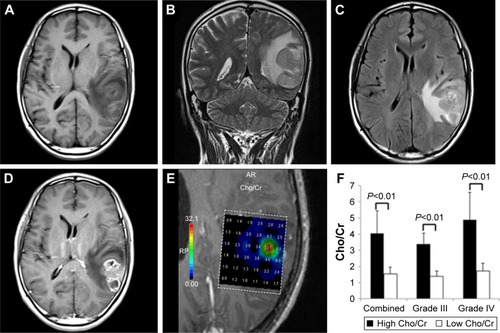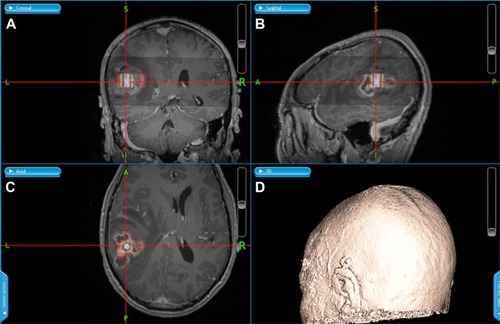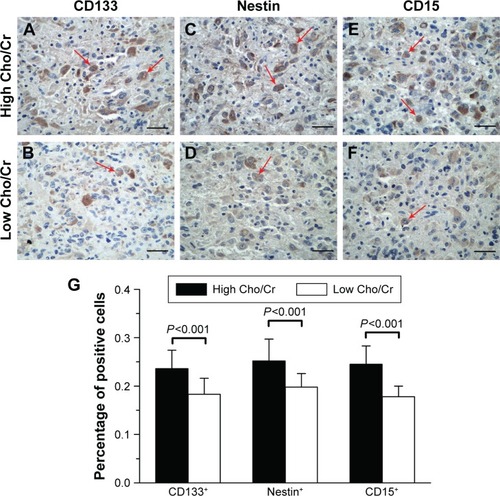Figures & data
Figure 1 Conventional MRI and 1H-MRS images of a typical glioblastoma.
Abbreviations: MRI, magnetic resonance imaging; 1H-MRS, proton magnetic resonance spectroscopy; WI, weighted image; T2-FLAIR, T2-weighted fluid-attenuated inversion recovery; Cho, choline; Cr, creatine.

Figure 2 Neuronavigational system-guided stereotactic biopsy and tumor resection.
Abbreviation: 3D, three-dimensional.

Figure 3 Neurospheres formed from glioma tissues with distinct Cho/Cr metabolic activities.
Abbreviations: Cho, choline; Cr, creatine.

Figure 4 Cancer stem-like cells within gliomas varied in number in distinct regions of gliomas.
Abbreviations: Cho, choline; Cr, creatine.

Figure 5 Expression of CD133 and nestin correlated with Cho/Cr ratios in gliomas.
Abbreviations: Cho, choline; Cr, creatine.

